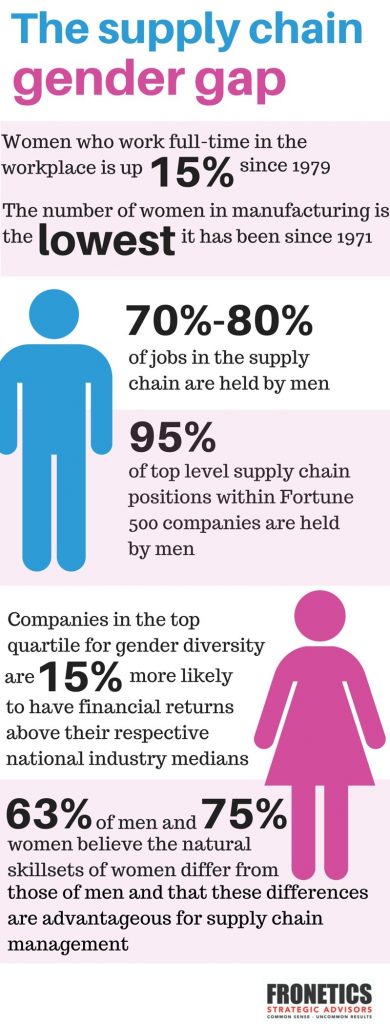
by Jennifer Hart Yim | Sep 27, 2016 | Blog, Strategy, Supply Chain, Talent
The supply chain talent deficit is real — but what about the experienced people who can’t find a job?
This guest post comes to us from Argentus Supply Chain Recruiting, a boutique recruitment firm specializing in Supply Chain Management and Procurement.
It’s no secret that we write a lot about the Supply Chain talent deficit — the growing industry consensus about a looming shortage of talent needed to fill Supply Chain, Procurement, and Logistics jobs as those roles grow in prominence and the baby boomers retire. It’s an important issue to the field that we recruit in, and we’re interested to see how companies, educational institutions and other industry players respond as it plays out. But today we wanted to comment on an interesting side note of the whole issue:
Every time we write about the Supply Chain talent deficit, on the Argentus blog or elsewhere, we see comments from experienced professionals in the field who aren’t able to find work. We’re always sure to say that the Supply Chain talent deficit is a big-picture trend, and doesn’t mean that everyone in the field is going to be able to get a job easily. But it’s interesting that we hear from quite a few people who are having difficulty finding work, despite the fact that companies are having more difficulty hiring in the field than perhaps ever before.
A comment by 3PL executive Valerie Kucherenko on one of our recent LinkedIn Publisher posts pointed out this disconnect, and got us thinking. First of all, here’s the relevant part of the comment:
“Frankly speaking there are so many articles, including the ones by Argentus Supply Chain Recruiting, indicating a shortage of qualified candidates in the Supply Chain field that I am torn between this feeling of high demand for Supply Chain professionals and the fact that many experienced ones can not find a job. Where is the confusion coming from?”
Let’s try to answer this question.
If there is a Supply Chain talent deficit, why are so many people in the field having trouble finding work?
First of all, the talent deficit in Supply Chain isn’t just buzz. Experts throughout the industry are talking about it, but it’s also something we’re hearing about daily from our clients looking to hire in the field, and from executives we speak to. We’re on the front lines of the talent war in this industry, and we can observe it directly. So it’s not that the difficulty of hiring in Supply Chain is made up.
Of course, the trouble that certain experienced people are having looking for work isn’t made up either. So we started thinking about big-picture reasons for this disconnect, based on our experience as people who have been recruiting in Supply Chain for over a decade. Here they are:
A certain amount of churn in employment is inevitable, and even a productive fact of the economy. There’s a reason why under economists’ definitions of “full employment,” there’s still about 5% of the workforce that’s unemployed. Structural factors such as geographic shifts and technological change mean that there will always be a certain number of unemployed people, independent of other factors like economic downturns, etc. This means that no matter the demand for Supply Chain talent, there will always be a certain number of people in between jobs — people who haven’t yet found work because it takes some time to get the right opportunity in front of the right people.
But that doesn’t tell the whole story. The other thing that helps explain this disconnect is the fact that the deficit of talent isn’t, strictly speaking, a numbers game. What matters isn’t necessarily the raw number of experienced candidates vs. positions (e.g. 10,000 candidates and 50,000 positions) so much as the kind of experience companies are looking for. This is one of the things that comes up over and over again in our conversations with executives.
Supply Chain’s role in companies is expanding. Instead of just being about putting product in the right place at the right time, Supply Chain now uses data, innovation, and supplier relationships to provide companies with a strategic edge. It interfaces with sales to plan and predict demand, etc. And while the function’s scope is increasing, companies are becoming more specific in their experience requirements. For example, more companies are looking for specific category experience (like Real Estate or IT) in Procurement. It’s possible that certain experienced professionals don’t have the right experience in the most high-demand niches (such as Demand Planning, S&OP), making it harder for them to find work than if “Supply Chain” was a more monolithic category. The nature of the experience required is changing — for example companies requiring specific software experience — and much of the deficit of talent exists on this cutting edge of skills requirements, rather than for more general, classic Supply Chain roles.
The solution to this issue? We think it’s two-fold: companies need to be more open-minded in their hiring, recognizing that strong business acumen can be as important to Supply Chain success as niche experience. And on the other side, candidates need to constantly work to adapt and diversify their skillsets, expanding their knowledge to follow the niches that are in highest demand among companies.
Hopefully that sheds some light on why it can be tough for certain Supply Chain professionals to find work even though there’s a deficit of Supply Chain talent more broadly. As F. Scott Fitzgerald once said, “the test of a first-rate intelligence is the ability to hold two opposed ideas in the mind at the same time, and still retain the ability to function.”
Which is true (in our experience), but we get that it doesn’t make it any easier for those Supply Chain workers who are having trouble finding that next role! Feel free to reach out to us for help.
Related posts:
![The supply chain gender gap [Infographic]](https://fronetics.com/wp-content/uploads/2024/10/supply-chain-gender-gap.jpg)
by Fronetics | May 26, 2015 | Blog, Strategy, Supply Chain, Talent

The number of women who work full-time in the workforce is up 15% since 1979. In the manufacturing sector, the story is very different. The number of men working in the manufacturing sector has increased, while the number of women working in the sector has declined. The number of women in the sector now stands at the lowest it has been since 1971.
Looking more broadly at the supply chain industry, it is clear that there is a significant gender gap. Between 70% and 80% of positions within the supply chain industry are held by men and 95% of top level supply chain positions within Fortune 500 companies are held by men. By comparison, men hold 85% of all executive officer positions within Fortune 500 companies.
The dearth of women working, at all levels, in the supply chain is not because women do not have the skillset and ability to succeed within the industry. Women are as capable as men when it comes to working within the supply chain industry. Indeed, it has been put forth that women are better suited for roles in supply chain management than men. Research conducted by SCM World found that the majority of men (63%) and women (75%) believe that the natural skillsets of women differ from those of men and that these differences are advantageous for supply chain management. Similarly, new research by McKinsey & Company found that companies in the top quartile for gender diversity are 15%more likely to have financial returns above their respective national industry medians.
The talent gap; an opportunity
According to Supply Chain Insights 60% of companies within the supply chain industry have job openings and 51% of companies are seeing an increase in turnover of supply chain leaders. Looking ahead, there are an estimated 1.4 million new supply chain workers needed by 2018 and the Bureau of Labor and Statistics predicts that the number of logistics jobs is expected to grow by 22 percent by 2022 – nearly double the rate of other professions. The supply chain talent gap arguably presents an opportunity to increase the number of women in positions throughout the supply chain and close the gender gap. The big question is how.
Addressing the gender gap
Here are 4 ways the supply chain industry can address the gender gap:
1. Increase visibility and tackle the image problem
93% of most companies’ supply chain is invisible. This statistic could also be used to reflect the number of people who know what the supply chain industry is; few people outside of the industry know what the supply chain is and what career opportunities there are. This needs to change.
To attract new talent the industry needs to make people aware of the supply chain – what it is, the integral role it plays in business, and the various opportunities there are within the industry.
2. Rethink talent acquisition and promotion
Within the supply chain industry the typical path up the corporate ladder has started out on the shop floor. If the industry is going to attract women and new talent companies need to look not only beyond their four walls, but also outside of the industry itself. When it comes to talent acquisition smart companies focus on the qualities of the individual and what they can bring to the table.
3. Move from talk to action
Battalia Winston’s Susan Medina and Peter Gomez point out that: companies without a proactive diversity-building strategy will fall victim to common-pitfalls and will fall flat.
“It’s important to acknowledge that diversity building is a proven growth strategy, not a superficial endeavor. But paying lip service to diversity and inclusion without a proactive strategy will lead to failure. Organizations need to prioritize, collaborate, and think long term.”
4. Take control
Women tend only to apply for jobs that they feel they are a 100% match; men do so even when they meet no more than 60% of the requirements. Similarly, men tend to be promoted more often than women simply because they speak up and ask for a promotion.
Women need to take responsibility for themselves and for their own careers. Women need to apply for jobs with confidence, even when they don’t have 100% of the requirements. They also need to speak up and ask for a promotion.
Kevin O’Marah, Chief Content Officer at SCM World, sums up the issue of the supply chain gender gap nicely: “Women in supply chain are too few, and their path to the top is at least partially blocked. Yet we all seem to think they bring something to the party that will make it better. The time to break this problem down is now.”

![The supply chain gender gap [Infographic]](https://fronetics.com/wp-content/uploads/2024/10/supply-chain-gender-gap.jpg)
by Fronetics | May 26, 2015 | Blog, Strategy, Supply Chain, Talent

The number of women who work full-time in the workforce is up 15% since 1979. In the manufacturing sector, the story is very different. The number of men working in the manufacturing sector has increased, while the number of women working in the sector has declined. The number of women in the sector now stands at the lowest it has been since 1971.
Looking more broadly at the supply chain industry, it is clear that there is a significant gender gap. Between 70% and 80% of positions within the supply chain industry are held by men and 95% of top level supply chain positions within Fortune 500 companies are held by men. By comparison, men hold 85% of all executive officer positions within Fortune 500 companies.
The dearth of women working, at all levels, in the supply chain is not because women do not have the skillset and ability to succeed within the industry. Women are as capable as men when it comes to working within the supply chain industry. Indeed, it has been put forth that women are better suited for roles in supply chain management than men. Research conducted by SCM World found that the majority of men (63%) and women (75%) believe that the natural skillsets of women differ from those of men and that these differences are advantageous for supply chain management. Similarly, new research by McKinsey & Company found that companies in the top quartile for gender diversity are 15%more likely to have financial returns above their respective national industry medians.
The talent gap; an opportunity
According to Supply Chain Insights 60% of companies within the supply chain industry have job openings and 51% of companies are seeing an increase in turnover of supply chain leaders. Looking ahead, there are an estimated 1.4 million new supply chain workers needed by 2018 and the Bureau of Labor and Statistics predicts that the number of logistics jobs is expected to grow by 22 percent by 2022 – nearly double the rate of other professions. The supply chain talent gap arguably presents an opportunity to increase the number of women in positions throughout the supply chain and close the gender gap. The big question is how.
Addressing the gender gap
Here are 4 ways the supply chain industry can address the gender gap:
1. Increase visibility and tackle the image problem
93% of most companies’ supply chain is invisible. This statistic could also be used to reflect the number of people who know what the supply chain industry is; few people outside of the industry know what the supply chain is and what career opportunities there are. This needs to change.
To attract new talent the industry needs to make people aware of the supply chain – what it is, the integral role it plays in business, and the various opportunities there are within the industry.
2. Rethink talent acquisition and promotion
Within the supply chain industry the typical path up the corporate ladder has started out on the shop floor. If the industry is going to attract women and new talent companies need to look not only beyond their four walls, but also outside of the industry itself. When it comes to talent acquisition smart companies focus on the qualities of the individual and what they can bring to the table.
3. Move from talk to action
Battalia Winston’s Susan Medina and Peter Gomez point out that: companies without a proactive diversity-building strategy will fall victim to common-pitfalls and will fall flat.
“It’s important to acknowledge that diversity building is a proven growth strategy, not a superficial endeavor. But paying lip service to diversity and inclusion without a proactive strategy will lead to failure. Organizations need to prioritize, collaborate, and think long term.”
4. Take control
Women tend only to apply for jobs that they feel they are a 100% match; men do so even when they meet no more than 60% of the requirements. Similarly, men tend to be promoted more often than women simply because they speak up and ask for a promotion.
Women need to take responsibility for themselves and for their own careers. Women need to apply for jobs with confidence, even when they don’t have 100% of the requirements. They also need to speak up and ask for a promotion.
Kevin O’Marah, Chief Content Officer at SCM World, sums up the issue of the supply chain gender gap nicely: “Women in supply chain are too few, and their path to the top is at least partially blocked. Yet we all seem to think they bring something to the party that will make it better. The time to break this problem down is now.”


by Fronetics | Mar 23, 2015 | Blog, Supply Chain, Talent

What you need to know about the supply chain talent gap.
The supply chain talent gap has been called a “perfect storm.” Few topics are shrouded in such doom and gloom. Every report cites doomsday statistics of the impending crisis when, by 2025, 60 million baby boomers will exit the workforce, leaving a gigantic gap when 40 million millennials take their place. To make matters worse, the retirement exodus is only one factor contributing to the sinking ship. Future supply chain professionals need to master not only the hard analytical skills but also the soft leadership skills fueled by the transition from an industrial economy to an economy grounded in service and information. In numbers, it means only 20% of the workforce will possess the skills required of 60% of all new supply chain jobs.
But listen up, all you forward-thinking millennials and midlevel supply chain managers with cross-functional expertise. There’s some good news: The market can’t get enough of you.
Yes, amid all the dire facts, there is opportunity. There has never been a better time to be, so to speak, on the other side of the table — a college graduate or a motivated professional looking for a career with upward mobility? What other field of work can offer as much promise to new recruits and current employees as the supply chain industry?
Just as all reports predict a brewing crisis, they also tout talent management as the primary remedy. For a self-motivated individual, fresh out of college or in the midst of a corporate climb, this focus on professional development presents a smorgasbord of options. Many companies have taken note and adopted a strategy of action for recruiting and retaining new talent. A growing number of university program offerings reflect a strengthening partnership between academia and the supply chain industry. Many supply chain companies are building partnerships with academic programs to offer internship opportunities; a move that’s creating strong early relationships with students and will likely have a positive effect on future recruitment efforts. A company that can offer its current staff competitive salaries in addition to cross-functional training is much better positioned to meet the challenges of the talent shortage and the evolving nature and demands of the supply chain.
Another way companies within the logistics and supply chain industries are attracting top talent is through their use of social media. Considering the global reach and vast talent pool of LinkedIn’s 300 million users, the business-focused social network is helping companies with open positions that might require a unique and specific skill set to connect with candidates across the globe.
What’s clear is that companies that follow a plan of inaction will be left behind. This new talent pool will swiftly turn down a company that remains stuck on strict functional divisions and favors the old siloed approach to doing business. Many supply chain managers have grown up in such divided organizations themselves, so they have been slow to take appropriate action to retain and train talent, according to a Supply Chain Insights survey, leaving those better prepared with a competitive advantage.
If a company does not appeal to the desires of top candidates, individuals will take their talent elsewhere. And there will always be another company to welcome them. As Rebooting Work author Maynard Webb points out in a 2013 interview with Elance, in order for companies to remain competitive they’ll need to adapt to the modern workforce. “Companies have traditionally thought of people as a disposable resource,” he says. “They have valued their buildings much more than employees… this doesn’t make sense in a world where the best people can choose to work wherever they want. Businesses have to realize that some jobs can be done from anywhere, anytime, and save the brick and mortar buildings for the few jobs that demand a physical presence.”
Touting the unlimited opportunities and unparalleled growth in the supply chain field should be part of turning the tide. Sure, there is a lot of talk about doom, but mainly for those companies that fail to attract and retain top talent.

by Fronetics | Mar 23, 2015 | Blog, Supply Chain, Talent

What you need to know about the supply chain talent gap.
The supply chain talent gap has been called a “perfect storm.” Few topics are shrouded in such doom and gloom. Every report cites doomsday statistics of the impending crisis when, by 2025, 60 million baby boomers will exit the workforce, leaving a gigantic gap when 40 million millennials take their place. To make matters worse, the retirement exodus is only one factor contributing to the sinking ship. Future supply chain professionals need to master not only the hard analytical skills but also the soft leadership skills fueled by the transition from an industrial economy to an economy grounded in service and information. In numbers, it means only 20% of the workforce will possess the skills required of 60% of all new supply chain jobs.
But listen up, all you forward-thinking millennials and midlevel supply chain managers with cross-functional expertise. There’s some good news: The market can’t get enough of you.
Yes, amid all the dire facts, there is opportunity. There has never been a better time to be, so to speak, on the other side of the table — a college graduate or a motivated professional looking for a career with upward mobility? What other field of work can offer as much promise to new recruits and current employees as the supply chain industry?
Just as all reports predict a brewing crisis, they also tout talent management as the primary remedy. For a self-motivated individual, fresh out of college or in the midst of a corporate climb, this focus on professional development presents a smorgasbord of options. Many companies have taken note and adopted a strategy of action for recruiting and retaining new talent. A growing number of university program offerings reflect a strengthening partnership between academia and the supply chain industry. Many supply chain companies are building partnerships with academic programs to offer internship opportunities; a move that’s creating strong early relationships with students and will likely have a positive effect on future recruitment efforts. A company that can offer its current staff competitive salaries in addition to cross-functional training is much better positioned to meet the challenges of the talent shortage and the evolving nature and demands of the supply chain.
Another way companies within the logistics and supply chain industries are attracting top talent is through their use of social media. Considering the global reach and vast talent pool of LinkedIn’s 300 million users, the business-focused social network is helping companies with open positions that might require a unique and specific skill set to connect with candidates across the globe.
What’s clear is that companies that follow a plan of inaction will be left behind. This new talent pool will swiftly turn down a company that remains stuck on strict functional divisions and favors the old siloed approach to doing business. Many supply chain managers have grown up in such divided organizations themselves, so they have been slow to take appropriate action to retain and train talent, according to a Supply Chain Insights survey, leaving those better prepared with a competitive advantage.
If a company does not appeal to the desires of top candidates, individuals will take their talent elsewhere. And there will always be another company to welcome them. As Rebooting Work author Maynard Webb points out in a 2013 interview with Elance, in order for companies to remain competitive they’ll need to adapt to the modern workforce. “Companies have traditionally thought of people as a disposable resource,” he says. “They have valued their buildings much more than employees… this doesn’t make sense in a world where the best people can choose to work wherever they want. Businesses have to realize that some jobs can be done from anywhere, anytime, and save the brick and mortar buildings for the few jobs that demand a physical presence.”
Touting the unlimited opportunities and unparalleled growth in the supply chain field should be part of turning the tide. Sure, there is a lot of talk about doom, but mainly for those companies that fail to attract and retain top talent.


![The supply chain gender gap [Infographic]](https://fronetics.com/wp-content/uploads/2024/10/supply-chain-gender-gap.jpg)


